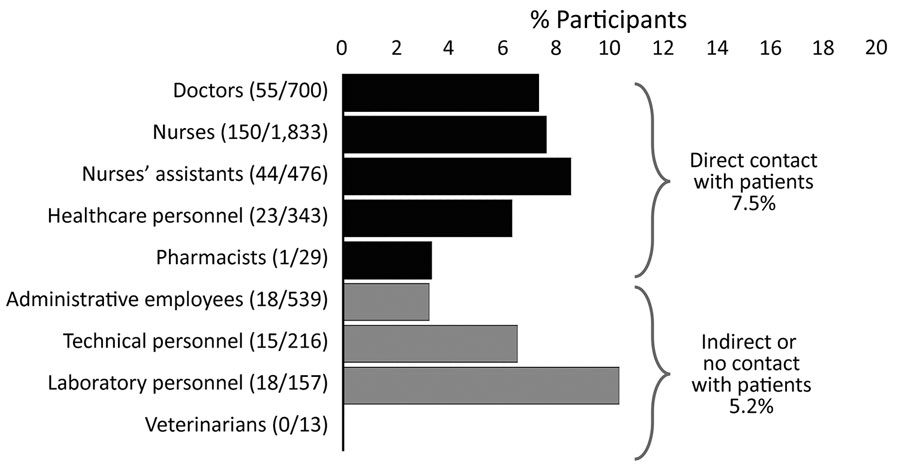Volume 27, Number 1—January 2021
Research Letter
Risk for SARS-CoV-2 Infection in Healthcare Workers, Turin, Italy
Figure

Figure. Seroprevalence of severe acute respiratory syndrome coronavirus 2 antibodies in healthcare workers according to tasks of participants, Turin, Italy. Participants are grouped according to direct (black bars) or indirect/no contact (gray bars) with patients. The difference between these 2 groups (7.5% vs. 5.2%) is significant (p = 0.013 by χ2 test). The healthcare personnel category includes psychologists, nutritionists, welfare workers, religious assistants, physical therapists, and orthoptists.
Page created: September 12, 2020
Page updated: December 21, 2020
Page reviewed: December 21, 2020
The conclusions, findings, and opinions expressed by authors contributing to this journal do not necessarily reflect the official position of the U.S. Department of Health and Human Services, the Public Health Service, the Centers for Disease Control and Prevention, or the authors' affiliated institutions. Use of trade names is for identification only and does not imply endorsement by any of the groups named above.